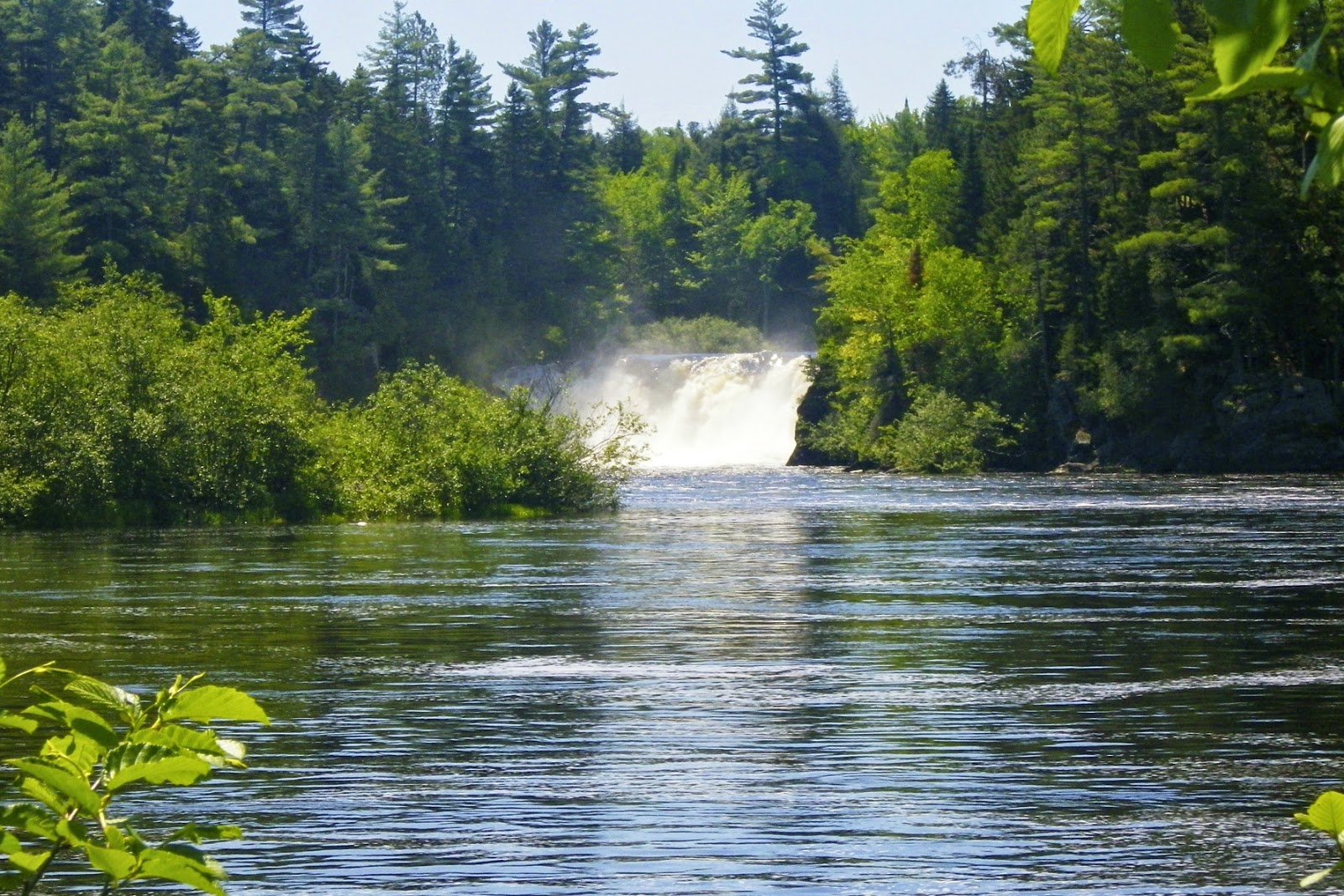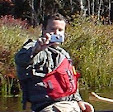 |
| Our cabin at Riverdrivers |
I did my first Dead River weekend last year with Mike, Earl and Tommy, and it was so much
fun that I decided to go back again this
year with Andy, Paul, Pat, and Jon.
The Dead is a
classic New England whitewater river with 14 miles of continuous rapids. Releases are controlled from the Flagstaff Lake Dam above Grand
Falls. Releases can range from 1,200 cfs (class II) to 7,000 cfs (Class IV+). Last year I ran an 1,800 cfs release. This year, I would be stepping it up
by running a 3,500 cfs release (class III) on Saturday, followed by a 2,400 cfs release (class
II/III) on Sunday.
I arrived at Andy’s house at around
10:00 on Friday for the six hour drive up to West Forks, ME. We arrived at our
cabin at Riverdrivers (formerly known as Webb’s Campground) at around 4:30 and
began to unpack. Paul, Pat and Jon
arrived a couple of hours later.
We lit a fire and settled in for the night in anticipation of a great
weekend.
 |
| The shuttle bus at the put-in |
We awoke early on Saturday and
began to pack up our gear for the shuttle. Old-time whitewater paddlers will remember
the Webb’s Shuttle Service then run by Ed Webb. In those days, the 20-mile shuttle down dirt logging roads was done
on the back flatbed trucks. Today,
the trip is done in the relative comfort of an old school bus, but it is still
a long, bumpy ride.
When we arrived, the put-in was busy with
rafting companies and boaters getting ready to launch. The release was 3,500
cfs, with another 450 cfs coming from the Spencer Stream for a total of 3,950
cfs – a solid class III. We hooked up with Kelly, Wayne and Andy and headed
downstream.
The first major rapid on the river
is the Spencer Rips – a short but intense rapid with 2 – 3 foot waves that sets the
tone for the rest of the trip. As
I bobbed my way down the rapid, I saw Jon up ahead of me flip, and then quickly
roll back up again. I knew that it
was going to be a fun and busy day.
 |
| Jon running Spencer Rips |
It turned out to be a fun level for
kayaks, but I found it challenging in my canoe. Water from continuous 2 –
3 foot waves
can quickly swamp an open boat. Big water paddlers in open boats often solve this problem by
installing small battery powered electric pumps. Unfortunately, I hadn’t gotten
around to getting a pump, so I had to avoid the big waves as much as
possible. Since I was also the only open
boater in the group, I was forced to read my own lines, which turned out to be
great “read and run” practice.
At this level, the rapids came at
us fast and furious, and we did have a few swims along the way. Everyone got a chance to rescue boats
and paddlers – except me. By the
time I reached the bottom of most of the rapids my boat was full of water and I
was looking for a place to bail.
I really need to get a pump!
My only swim was in a long rocky
rapid known as “Mile Long” - you
can guess why it has that name.
About half way down, I went over a rock into a hole filling my boat with
water. Now it’s possible to paddle
a swamped canoe, but it’s difficult.
My options were to try to bail out the canoe while bouncing down the
rapid, or try to work my way over to shore. I decided to paddle over to shore, and got about 15' before I dumped and took a swim.
 |
| Andy running Gravel Pit |
Once in the water I grabbed my boat and tried to swim to shore, but in the fast moving water, I
wasn’t making any progress.
Looking downstream I could see that I was approaching another set of
rapids, so I abandoned the canoe and assumed the safe swimming position - on my
back with my feet downstream.
Swimming through rapids is
something that I try to practice, but it doesn’t match the real
experience. First, I swam though a
series of “haystacks” or standing waves where you breathe in the trough, and
hold you breath as you go through the wave - breathe, glug, breathe, glug,
breathe, glug. If this continues long enough, it can be though to catch your breath. Fortunately, it was a short set of haystacks.
After the waves, I could see a
horizon line downstream indicating that I was approaching a rock with a hole on
the other side. I tucked into a
ball as the pour over pulled me down into the hole. When I came out the other side, I swam hard toward shore. Fortunately, Pat had been working my
boat toward the same spot. It was just a
short time before I was back in my boat, but the two most difficult rapids
remained – Upper and Lower Poplar.
 |
| Jon in Lower Poplar |
Upper Poplar is a short but intense
rapid filled with rocks and holes.
After Upper poplar is Lower Poplar. The river turns right as the water tumbles down the left
side in huge wave trains and large holes. I took the sneak route to the right and made it down
fine. Unfortunately, Jon flipped
in the large hole at the top, and after several unsuccessful roll attempts, he
ended up swimming the rapid. It
was a long and nasty swim, but we got him back in his boat, and continued
downstream to our cabin.
Day one was complete. It had been a tough day with six of our
eight paddlers swimming at least once, and a total of nine swims in all. The run took us six hours. Still, it was a lot of fun, and we were
looking forward to another run on Sunday.






















